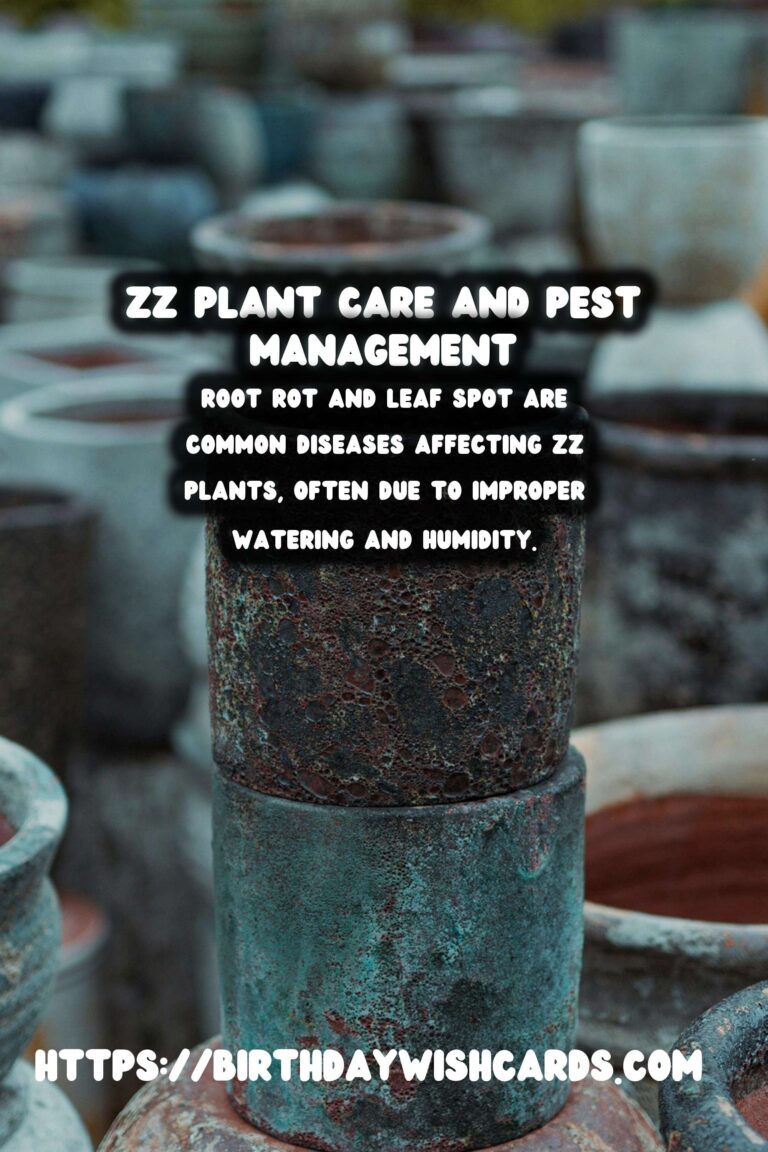
ZZ plants, known scientifically as Zamioculcas zamiifolia, are popular houseplants due to their robustness and striking appearance. However, like all plants, they can be susceptible to certain pests and diseases. Understanding how to identify and treat these issues is essential for maintaining a healthy ZZ plant.
Common Pests Affecting ZZ Plants
ZZ plants are relatively pest-resistant, but they can occasionally fall victim to common houseplant pests. Here are some of the most common pests that may affect your ZZ plant:
Spider Mites
These tiny pests are hard to see with the naked eye but can cause significant damage by sucking the sap from leaves, leading to yellowing and browning. To manage spider mites, regularly inspect your plant and use a gentle insecticidal soap or neem oil to keep them at bay.
Mealybugs
Mealybugs appear as small, white, cotton-like masses on the plant. They feed on plant sap, leading to weakened plants and yellowing leaves. Treat mealybugs by dabbing them with a cotton swab dipped in alcohol, or use a systemic insecticide for larger infestations.
Scale Insects
Scale insects are small, round, and often brown or black. They attach themselves to the stems and undersides of leaves. Scrape them off gently with a fingernail or use horticultural oil to suffocate them.
Diseases That May Affect ZZ Plants
While ZZ plants are hardy, they are not immune to diseases, especially if their growing conditions are not ideal. Here are a few diseases to watch out for:
Root Rot
Root rot is the most common disease affecting ZZ plants, often caused by overwatering. Signs include yellowing leaves and a mushy stem base. To treat root rot, remove the affected parts of the plant, reduce watering, and repot the plant in fresh, well-draining soil.
Leaf Spot
This fungal disease causes brown or black spots on the leaves. It is usually a result of excessive moisture on the foliage or poor air circulation. Improve air circulation around the plant and avoid getting the leaves wet to help prevent leaf spot.
Bacterial Soft Rot
This disease causes the plant tissue to become soft, mushy, and emit a foul odor. It often occurs in overly wet conditions. Remove infected parts of the plant and ensure proper drainage to prevent recurrence.
Preventive Measures
Prevention is key when it comes to maintaining a healthy ZZ plant. Here are some tips to keep your plant thriving:
- Avoid overwatering and ensure the pot has adequate drainage.
- Keep your plant in bright, indirect light to prevent stress.
- Regularly inspect your plant for signs of pests or diseases.
- Isolate new plants before introducing them to your existing collection to prevent the spread of pests.
- Maintain good air circulation around your plants.
Conclusion
Caring for a ZZ plant involves understanding the potential threats from pests and diseases. By following proper care guidelines and being vigilant about changes in your plant’s appearance, you can enjoy the beauty of this hardy houseplant for years to come.
ZZ plants are robust but can be affected by common pests and diseases. Spider mites, mealybugs, and scale insects are typical pests that can harm ZZ plants. Root rot and leaf spot are common diseases affecting ZZ plants, often due to improper watering and humidity. Preventive care, including proper watering and regular inspections, is essential for maintaining a healthy ZZ plant.
#ZZPlants #Houseplants #PlantCare #Gardening #PestControl

